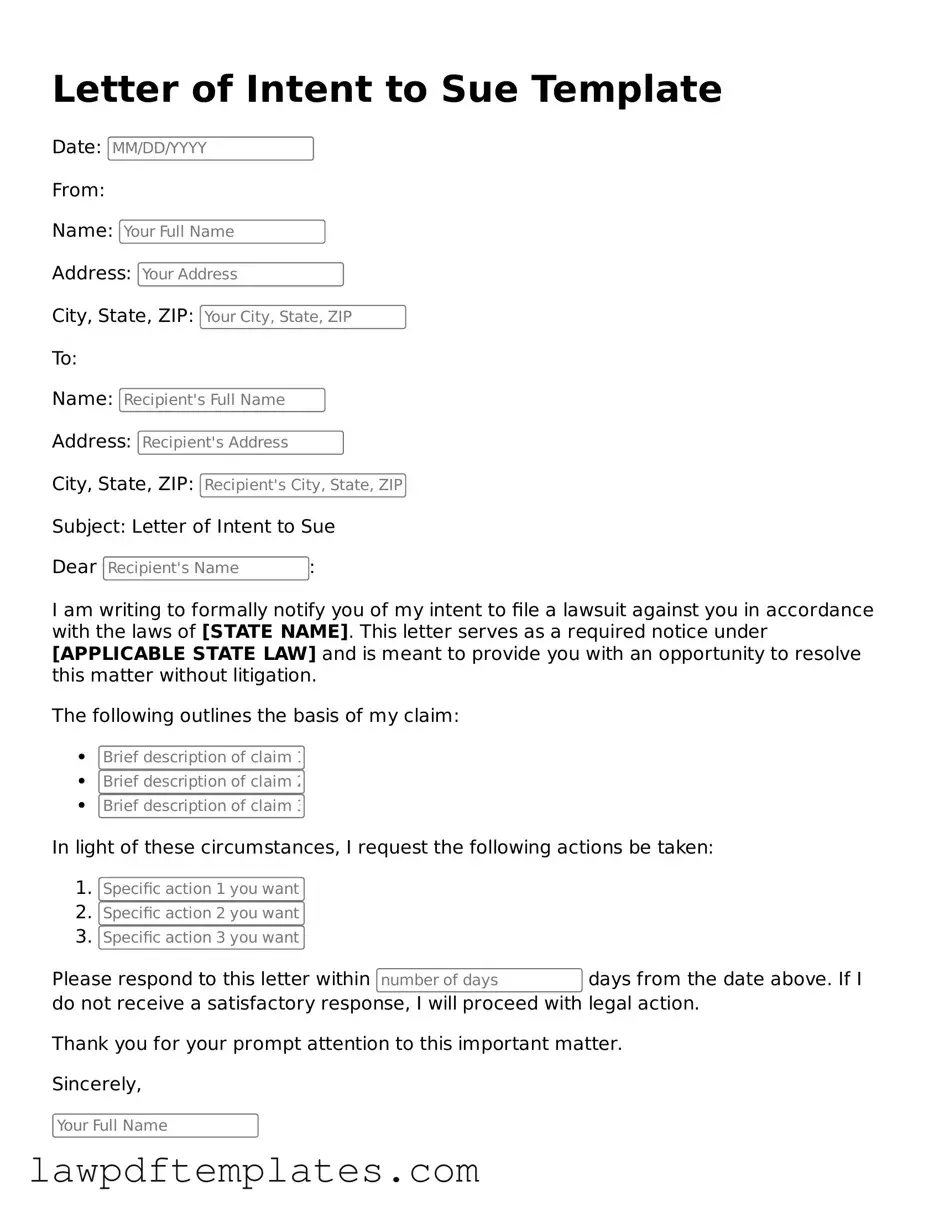Filling out a Letter of Intent to Sue form can be a daunting task. Many people make common mistakes that can delay the process or even jeopardize their case. One frequent error is providing incomplete information. It is essential to include all relevant details about the dispute, including names, dates, and specific incidents. Omitting any of this information can lead to misunderstandings or a lack of clarity.
Another mistake is failing to clearly state the reasons for the intended lawsuit. The form should clearly outline the basis for the claim. If the reasons are vague or unclear, it may confuse the recipient and weaken your position. Make sure to articulate your grievances in a straightforward manner.
Many individuals also neglect to sign and date the form. A signature is not just a formality; it is a declaration of intent. Without it, the document may be considered invalid. Always double-check that you have signed and dated the form before submission.
Additionally, people often ignore the importance of keeping copies of the submitted documents. After sending the Letter of Intent to Sue, it is wise to retain a copy for your records. This can be crucial for future reference or if any disputes arise regarding what was submitted.
Using unclear language is another common pitfall. Legal documents should be straightforward and easy to understand. Avoid jargon and overly complex sentences. Instead, use clear and concise language to express your intentions.
Some individuals forget to include their contact information. This information is vital for the recipient to respond. Ensure that your phone number, email address, and mailing address are clearly stated on the form.
Another mistake is failing to follow the proper submission guidelines. Each jurisdiction may have different requirements regarding how to submit the form. Be sure to check local rules to ensure compliance with submission methods, such as mail or electronic filing.
People sometimes underestimate the importance of deadlines. There may be specific time frames within which the Letter of Intent to Sue must be filed. Missing these deadlines can have serious consequences for your case.
Lastly, some individuals do not seek advice before filling out the form. Consulting with a legal professional can provide valuable insights and help avoid mistakes. Even if you choose to fill out the form yourself, guidance can ensure that you present your case effectively.
